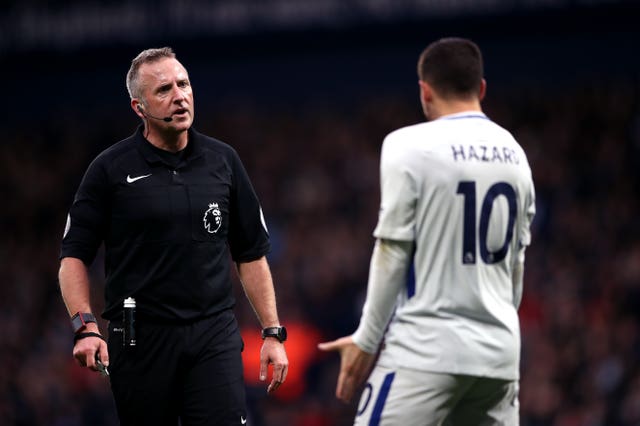
Sport and data have long had a difficult relationship, and Jeff Stelling is the latest to criticise what he deems “the most useless stat in the history of football”.
The Soccer Saturday host’s rant came after Arsenal manager Arsene Wenger referred to a relatively new statistic, Expected Goals (xG), after the Gunners’ 3-1 defeat at Manchester City.
Jeff Stelling shared his thoughts over the 'Expected Goals' statistic at the weekend 😡😂 pic.twitter.com/SP2MgMuuoQ
— Soccer AM (@SoccerAM) November 21, 2017
“What does it tell you?!” Stelling ranted. Well, perhaps someone who works with xG can explain.
What does it tell you?

Mike Goodman is a freelance football writer and data journalist who has been using xG as part of his analysis for around five years now.
“Expected Goals looks at each shot and estimates its chances of becoming a goal based on a history of similar shots,” Goodman explained. “Combining things like location, the type of assist and the speed of the move gives you a good estimation of how likely shots are to become goals.”
The result is a figure that tells you what the likelihood of that shot going in is; an xG of 0.9 for a shot suggests a goal would have occurred nine times out of 10 in that situation.
After a game is finished, a sum total is produced which suggests how many goals should have been scored overall. The figures below for example suggest Arsenal deserved their 2-1 north London derby win.
The bigger the square, the greater the chance of a goal, while pink squares represent goals scored.
xG map for the North London Derby. Arsenal played their best match of the year and handled Tottenham easily. pic.twitter.com/4OgsC8N3Ol
— Caley Graphics (@Caley_graphics) November 18, 2017
“The crucial thing about expected goals is that, in larger sample sizes, it’s better at predicting the future than anything else we have,” said Goodman.
So if a team’s xG is better than the goals they’re actually scoring, that side’s fans can reasonably expect the goals to start coming sooner or later.
A force for good?

Expected Goals is used by a number of companies now, and the BBC’s Match of the Day now includes xG in their post-game stats.
“What I like about xG is that the statistic mirrors the way fans already think and talk about the game,” said Goodman. “It simply brings historical information in easily understandable form to questions like: was the scoreline a fair result?”
Fans, pundits and analysts have talked for years about shots on target – is xG not simply an improvement on those numbers?
“The xG value of any shot contains a lot of information about what kind of shot it was,” Goodman continued. “While all shots on target tells you is that a shot ended up on net.”
The sceptics

Michael Kurn is a television presenter who, among other things, hosts the Premier League’s Fanzone show – and he’s not sure that xG has a lot to offer.
“For me xG doesn’t add much value. Football can be an unpredictable game and statistics like this are just an educated guess,” said Kurn.
“Manchester City should win the league the way they are playing, but if all of a sudden they lose a key player or Sergio Aguero stops finding the back of the net, it throws the stat into disarray.”
That’s not to say Kurn doesn’t like to use numbers and statistics in his analysis – but it’s a different form of data he’s interested in.
“I love a statistic, but for me I love a statistic that tells a story and builds anticipation,” he said.
“‘Which one of your team is most prolific against the opposition?’ Something tangible I can show evidence for easily.”
5 – Here are the five players with the highest expected goals total this Eredivisie season. Chances. pic.twitter.com/2GHrO6ide4
— OptaJohan (@OptaJohan) November 24, 2017
“I am always open to being convinced and challenged,” he continued. “I would love to see the success rate of xG at the end of the season. ‘How many times was it correct over the course of the year?’, for example.
“I think it’s good to be aware of, but we all know if a player could have done better in front of goal.”
And Kurn is far from the only one who feels there are gaps in xG’s armour.
“I think what xG doesn’t take into account, something all stats have an issue with, is the context of the game,” said football writer Jonathan Wilson on the Guardian’s Football Weekly podcast.
“In the Tottenham 4-1 Liverpool game (in October), if you look at the statistics Liverpool actually did alright because Tottenham switched off in the last half hour,” he continued.
If xG does have its flaws then, what is it doing to improve?
It’s getting better all the time

As xG has attempted to improve football analytics, so too has xG looked to iron out its own flaws – flaws Goodman and others are aware of.
“What about games where a team has lots of dangerous possession in the final third but doesn’t turn that into shots?” said Goodman.
“Because xG works so well over lots of games we know that those things even out, but by building models which attempt to value chains of possession in a similar way, analysts hope to both better isolate those games where dangerous possession and shots diverge, and also better evaluate which players contribute to building attacks.”
Clearly xG is attempting to be a force for good, so why does the football world appear divided?
The backlash

Jeff Stelling’s comments split the world of football right down the middle – and Goodman has a theory on why.
“One thing that’s true about using stats in sports is that it provides a different set of people with expertise,” he said.
“Some embrace that and use it to better inform their analysis, but I think some perceive that work as threatening and therefore opt to dismiss it.”
Goodman is of the opinion that football fans should enjoy the game however they like, but suggests the sport should embrace the new as it has done in the past.
“You wouldn’t turn off instant replay now that we’ve discovered slow-motion video,” he said. “So why ignore all these stats we can mould into a helpful tool?”

Enjoy the convenience of having The Sunday Post delivered as a digital ePaper straight to your smartphone, tablet or computer.
Subscribe for only £5.49 a month and enjoy all the benefits of the printed paper as a digital replica.
Subscribe